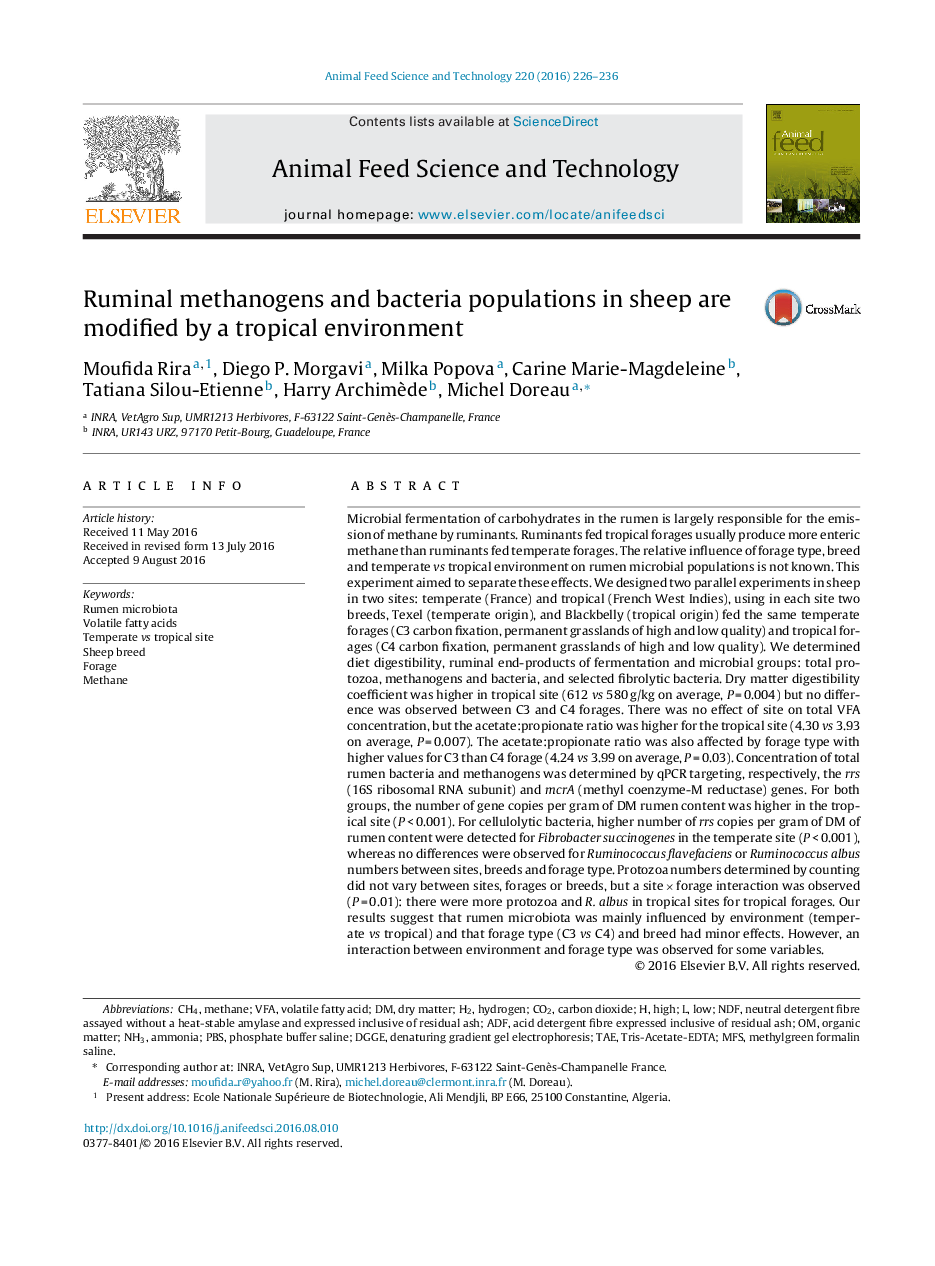| کد مقاله | کد نشریه | سال انتشار | مقاله انگلیسی | نسخه تمام متن |
|---|---|---|---|---|
| 2419241 | 1552365 | 2016 | 11 صفحه PDF | دانلود رایگان |
• Methanogen and bacteria populations differ between temperate and tropical areas.
• Differences in forage digestion depend on their composition, not on site of growth.
• Sheep breeds can adapt to their environment through rumen digestion.
Microbial fermentation of carbohydrates in the rumen is largely responsible for the emission of methane by ruminants. Ruminants fed tropical forages usually produce more enteric methane than ruminants fed temperate forages. The relative influence of forage type, breed and temperate vs tropical environment on rumen microbial populations is not known. This experiment aimed to separate these effects. We designed two parallel experiments in sheep in two sites: temperate (France) and tropical (French West Indies), using in each site two breeds, Texel (temperate origin), and Blackbelly (tropical origin) fed the same temperate forages (C3 carbon fixation, permanent grasslands of high and low quality) and tropical forages (C4 carbon fixation, permanent grasslands of high and low quality). We determined diet digestibility, ruminal end-products of fermentation and microbial groups: total protozoa, methanogens and bacteria, and selected fibrolytic bacteria. Dry matter digestibility coefficient was higher in tropical site (612 vs 580 g/kg on average, P = 0.004) but no difference was observed between C3 and C4 forages. There was no effect of site on total VFA concentration, but the acetate:propionate ratio was higher for the tropical site (4.30 vs 3.93 on average, P = 0.007). The acetate:propionate ratio was also affected by forage type with higher values for C3 than C4 forage (4.24 vs 3.99 on average, P = 0.03). Concentration of total rumen bacteria and methanogens was determined by qPCR targeting, respectively, the rrs (16S ribosomal RNA subunit) and mcrA (methyl coenzyme-M reductase) genes. For both groups, the number of gene copies per gram of DM rumen content was higher in the tropical site (P < 0.001). For cellulolytic bacteria, higher number of rrs copies per gram of DM of rumen content were detected for Fibrobacter succinogenes in the temperate site (P < 0.001), whereas no differences were observed for Ruminococcus flavefaciens or Ruminococcus albus numbers between sites, breeds and forage type. Protozoa numbers determined by counting did not vary between sites, forages or breeds, but a site × forage interaction was observed (P = 0.01): there were more protozoa and R. albus in tropical sites for tropical forages. Our results suggest that rumen microbiota was mainly influenced by environment (temperate vs tropical) and that forage type (C3 vs C4) and breed had minor effects. However, an interaction between environment and forage type was observed for some variables.
Journal: Animal Feed Science and Technology - Volume 220, October 2016, Pages 226–236
